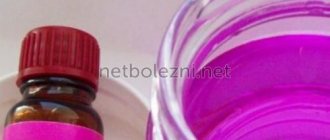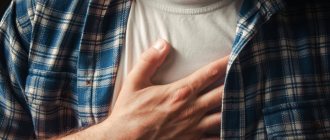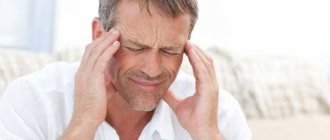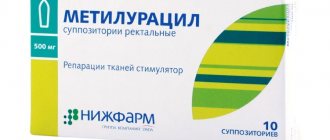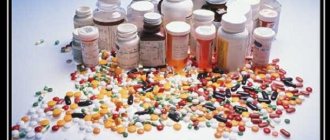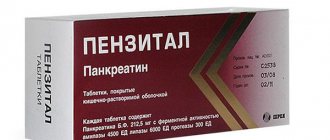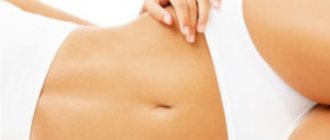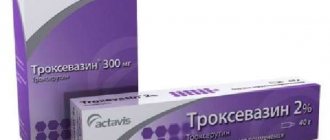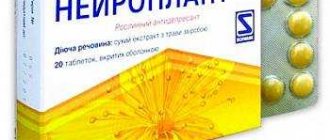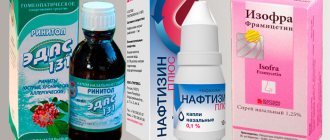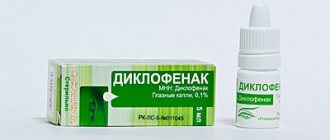Fungus tablets are the most effective way to combat all types of mycoses. When treating fungus, it is important to take treatment comprehensively and systematically. In situations where there is no result from therapy for a long period, it is impossible to change medications independently when treatment is started.
Comparing treatment with tablets with other methods:
- The effect of tablet therapy is 80% higher.
- Relatively simple treatment process.
Main classification and groups
Antifungal drugs are classified according to the following criteria:
- According to the method of influence on the microorganism: fungistatic - destroy the cell membrane (slowing down the vital processes of the microorganism with their subsequent removal from the body); fungicidal - blocking the synthesis of lipids and enzymes, which provokes the death of fungal microflora.
- According to the spectrum of activity: broad spectrum of action; narrow spectrum.
- According to the degree of tolerability: with a large number of side effects, with a minimum of side effects, easily tolerated.
- According to the method of removal from the body: through the intestines, through the kidneys.
- By method of use: oral, for external use.
The most common classification is by chemical structure:
- polyene antibiotics - natamycin, nystatin, levorin, amphotericin;
- imidazole derivatives – ketoconazole, miconazole, clotrimazole, bifonazole, econazole;
- triazole derivatives – voriconazole, fluconazole;
- N-methylnaphthalene derivatives (Allylamines) – naftifine, terbinafine;
- echinocandins – micafungin, caspofungin, anidulafungin;
- Drugs of other classes - amorolfine, griseofulvin, flucytosine, ciclopirox.
The most common application of this classification is the search for an effective analogue when it is impossible to take a drug that is most effective for a given pathogen.
Polyene antibiotics
Basic properties:
- Change in the permeability of the cell membrane of a fungal or bacterial agent;
- Creation of ion channels in the cell membrane, increasing its electrical conductivity for non-electrolytes;
- Inhibition of sterol synthesis.
Drugs of this class are toxic, poorly absorbed from the gastrointestinal tract, excreted through the kidneys, and are not concentrated in the brain and spinal cord. Polyenes are not effective against microorganisms that are in a latent stage or exhibit low activity.
Imidazole derivatives
The main advantage of drugs of this class is uniform absorption, regardless of acidity in the gastrointestinal tract. Depending on the molecular structure, the imidazole ring can act as a base or an acid radical.
Principle of action: inhibition of the synthesis of ergosterol and enzymes dependent on cytochrome P-450. Like polyenes, they have a fungistatic effect. The structure is similar to antibiotics of the macrolide class.
Triazole derivatives
With low acidity in the gastrointestinal tract, they are metabolized into difficult-to-break-down salts, which are deposited in the joints, gradually replacing cartilage tissue.
The exception is fluconazole. Preparations of this group have a wide spectrum of action, are effective against both active microorganisms and microorganisms in latent form (possibility of use for acute and chronic forms of mycoses, candidiasis).
Allylamines
Broad-spectrum drugs that have a fungistatic or fungicidal effect depending on the type of pathogen. Due to the high rate of elimination from the body (up to 24 hours) and high sensitivity to disturbances in the acid-base balance in the gastrointestinal tract, they are mainly used for superficial mycoses.
When applied externally, they have a mild anti-inflammatory effect.
Echinocandins
The principle of action is to block the synthesis of the active component of the cell membranes of fungi that do not have the protective gene FKS1, D-glucan. Drugs of this class have shown high effectiveness in mycotic pneumonia.
Other drugs
Narrow-spectrum drugs for external and oral use. The agents are also used against gram-positive and some gram-negative bacteria.
What medications are suitable for the treatment of onychomycosis in children and pregnant women?
When using the drug for this category of patients, it is necessary to study the instructions especially carefully. Most often, dermatologists prescribe topical medications to children and pregnant women. They have significantly less toxic effects on the body.
Other adult patients can use any antifungal drugs if there are no contraindications.
It is especially effective to treat onychomycosis in childhood and pregnancy with medicinal varnishes and liquids in the form of solutions. These products cover the nail plate with an impenetrable film, penetrate deeply and prevent the spread of infection.
Typically, dermatologists prescribe the following drugs for topical use:
- nystatin;
- Mikozan.
In case of significant spread of the fungus requiring systemic treatment, the following is prescribed:
- terbinafine;
- fluconazole.
It is unacceptable to prescribe medications on your own, since they all have side effects and contraindications. Treatment should be carried out under the supervision of a specialist.
Use according to indications
In the classification of D. A. Kharkevich, drugs are presented according to their maximum effectiveness against a particular group of pathogenic fungi, taking into account the resistance and localization of microorganisms, according to the pharmacokinetics of the drug.
Systemic and deep mycoses
The most effective:
- polyenes – mycoheptin, amphotericin;
- azoles – Ketoconazole, fluconazole, itraconazole;
Due to the need for long-term use for systemic mycoses, drugs with minimal toxic load on the liver and kidneys are selected. On time and 3 days after completion of therapy, the patient takes hepatoprotectors and nephroprotectors.
Epidermycoses
Narrow-spectrum drugs for external use are prescribed; broad - orally. Maximum effectiveness for drugs with a fungicidal effect: allylamines - Terbinafine; others - potassium iodide solution, chloronitrophenol, griseofulvin.
Treatment of diseases caused by opportunistic fungi
The rapid development of opportunistic fungi, depending on the type of agent, provokes a sharp increase or decrease in the acidity of the blood and gastrointestinal tract. An additional requirement for drugs, in addition to the minimum resistance of pathogens, resistance at pH below 2.5, above 5.8:
- polyenes – levorin, amphotericin, nystatin;
- imidazoles – clotrimazole, miconazole;
- triazoles: quaternary ammonium salts.
When treating generalized candidiasis, the effectiveness of a drug is more important than its toxicity and method of removal from the body. Exceptions are liver diseases that lead to disturbances in phospholipid metabolism, and kidney pathologies that reduce their filtration function.
For body
Signs of fungus on the body are pink-red ring-shaped spots with slightly raised, flaky edges. If a person does not immediately consult a doctor and practices self-medication, then complications will not last long. A staphylococcal or streptococcal bacterial infection is added to the fungal infection.
To prevent negative developments, you need to immediately use ointments with a powerful fungicidal effect:
- Nystatin;
- Terbinafine.
- Mycoseptin;
- Zalain;
- Ketoconazole;
- Lamisil;
- Nitrofungin;
- Mycozolon.
Candida yeast-like fungi, also known as the causative agents of candidiasis, “settle” in the skin folds, including the inguinal folds. An interesting fact is that a drug synthesized many decades ago copes well with them. This is a cheap antimycotic drug Clotrimazole, which can be bought at any pharmacy.
Principle of action depending on the active substance
The effect of the active substance differs in different drugs, depending on the presence of auxiliary components. The complex action of several active substances differs from the action of each of them separately.
Ketoconazole
Active substance – ketoconazole:
- slows down the synthesis of triglycerides and ergosterol;
- increases the permeability of the cell membrane;
- reduces androgen production;
- binds to red blood cells.
Maximum absorption in an acidic environment is up to 75%. The period of reaching the maximum concentration in the blood plasma is 2 hours. The half-life period from the body is 96 hours. The drug is metabolized in the liver and excreted through the gastrointestinal tract.
Itraconazole
Active substance – itraconazole:
- interferes with the synthesis of enzymes dependent on cytochrome P-460;
- disrupts the process of ergosterol synthesis;
Drugs are better absorbed at high acidity. Maximum bioavailability – 55%. The active substance is concentrated in the tissues. In blood plasma the concentration is minimal. The drug is designed for long-term use. The active substance remains in the body for 3 months. After a 3 month course.
Fluconazole
The drug inhibits the synthesis of ergosterol, cytochrome CYP2C9. Unlike other azoles:
- absorbed at any acidity of the gastrointestinal tract;
- selectively acts on enzymes dependent on cytochrome P-450 without inhibiting their production in the liver:
- does not inhibit androgen synthesis;
Bioavailability – 90%. The time to reach maximum concentration after a single dose is 30-60 minutes. The half-life is 38 hours after a single dose. The drug is concentrated in the blood plasma. 90% concentration is achieved on day 4-5 if taken once a day.
When taken 2 times a day, 90% concentration is achieved on day 2. Penetrates well into the liquor. Therapeutic concentration in the epidermis after 7 days, in the nail plate after 120 days when taken once a day. The drug is excreted through the kidneys.
Terbinafine
Broad-spectrum allylamine with a fungicidal effect. The drug slows down the synthesis of sterols, which leads to the accumulation of squalene. Terbinafine does not inhibit the synthesis of cytochrome P-450 - low toxic load on the liver. The drug is concentrated in hair, nails, skin, and binds to proteins in the blood plasma by 99%.
Absorption period 40 min. Onset of action 4.5 hours after taking the first therapeutic dose. The half-life is 16-18 hours. The complete elimination period is up to 400 hours. Terbinafine is metabolized in the liver and excreted through the gastrointestinal tract.
Griseofulvin
Belongs to the grisan class of antibiotics. Its structure is similar to penicillin microorganisms.
Pharmacological properties:
- slowing down the division of fungal cells by disrupting the structure of the mitotic spindle;
- disrupts the connection of cell proteins with messenger RNA;
- disrupts the connection between infected keratin and the dermis, accelerating its replacement with healthy tissue.
The drug has a fungistatic effect. Bioavailability – 80%. Therapeutic concentration – 4-5 hours after taking the first dose. The average half-life is 24 hours. Excreted: 64% through the kidneys, 36% through the gastrointestinal tract.
Pills
Systemic medications are not the last in the ranking of antifungal drugs for nails, but they are prescribed only for advanced stages of the disease. Indications are extensive fungal infections, peeling of the plate from the skin, discoloration to brown or black. To cope with the pathology, your doctor may prescribe a good remedy against nail fungus from the following list:
- Fluconazole. The name of the drug coincides with the name of the active component. During treatment, side effects may develop; in case of overdose, hallucinations are possible. The downside is that the drug is sold only by prescription, so you need a doctor’s prescription to purchase it. Plus - tablets can be prescribed to children from the age of 5 years.
- Ketoconazole. These tablets have androgenic, fungistatic, fungicidal and antifungal effects. Tablets based on the substance ketoconazole are indicated not only for the treatment, but also for the prevention of mycoses. The downside of the drug is a large list of medications with which it cannot be taken simultaneously, otherwise the side effects will increase. Plus, tablets are approved for children from 3 years of age.
List of antimycotic drugs to take
The dosage of antifungal drugs is prescribed in the instructions from the manufacturer. The doctor may prescribe a different dosage if you are simultaneously taking other drugs with which the drug interacts, low creatinine clearance (if the drug is excreted through the kidneys), impaired phospholipid metabolism, the need for dialysis, or significant deviations in body weight.
Azoles for body skin
At the initial stages of fungal infections, forms for external use are more effective:
- direct and local effect on the lesion;
- performance;
- no toxic load on the liver, kidneys;
- Possibility of use for preventive purposes.
Oral use is necessary for: chronic mycoses; rapid spread of the lesion; the absence of an external form of release of the drug, to which the microorganism is most sensitive; presence of contraindications for external use, vitiligo.
Nystatin
Ointment: apply a thin layer to the affected area 2 times a day; Duration of therapy is 7-14 days. In case of severe form or widespread localization, combine with tablets: children 1-3 years old 125,000 units. 2 times a day; over 3 years 250000 Units. 3 times a day.
The highest sensitivity to Nystatin is found in yeast fungi of the genus Candida.
Fluconazole
Dosages:
- adults – 10 mg, once a day by infusion, intravenously or orally 100 mg, in the first administration 200 mg (course duration 7-14 days with a chronic course up to 30 days);
- Children under 12 years of age - at the rate of 2 mg of dry active substance per 1 kg of body weight, in the first administration 4 mg/1 kg.
Used for skin candidiasis.
Itraconazole
The method of application depends on the pathogen:
- Dermatophytes – 100 mg per day for 30 days or 200 mg per day every 12 hours for 7 days;
- Tinea versicolor – 200 mg once a day for 7 days.
Release forms: capsules 100 mg; solution for internal use.
Clotrimazole
The ointment is applied 2-3 times a day in a thin layer. Duration of treatment: dermatomycosis from 28 days; lichen rubiformis 7-21 days. The cream is also used for streptococcal skin infections.
Ketoconazole
Adults 2 tables. Once a day during meals. The children's daily dosage is prescribed at the rate of 3 mg/1 kg of body weight once a day, for a duration of 6-12 months. Taken for Seborrheic dermatitis of the scalp; chronic skin candidiasis.
For candidiasis
For candidiasis of the skin, mucous membranes, and genital organs, external forms can be combined with oral medications of one drug or complex therapy is carried out. Exceptions are skin candidiasis at the initial stage.
Pimafucin
Mode of application:
- vaginal suppositories – 1 pc. 3-6 days (for Candida albicans, additionally 1 tablet 4 times a day - 10-20 days);
- If the male genital organs are affected, apply the cream symptomatically at least once a day until the symptoms disappear;
- Intestinal candidiasis – 1 table. 4 times a day for adults, children 1 tablet 2 times a day for up to 7 days (food intake does not affect the absorption of pimafucin).
If the causative agent of candidiasis is Candida glabrata, or Candida krucei, take voriconazole.
Clotrimazole
Apply a thin layer from the edges to the center 4 times a day. Course duration is up to 25 days. After the symptoms disappear, continue the course for 10 days.
Diflucan
Release forms: capsules 50, 100, 150 mg; suspension, solution for intravenous administration in equivalent dosages of the active substance.
Dosages:
- Invasive candidiasis - 800 mg on the first day, 400 mg each, duration of therapy is 14-21 days;
- Oropharyngeal candidiasis – 400 mg on the first day, 100-200 mg on days 4-21:
- Atrophic candidiasis of the oral cavity due to wearing dentures - 50 mg for 14 days in combination with antiseptics;
- Candiduria – 200-400 mg for 7-21 days;
- Chronic mucocutaneous candidiasis – 50-100 mg for 28 days (with concomitant infectious diseases, the course can be extended);
- Chronic candidiasis of the esophagus - 200-400 mg on the first day, 100-200 mg 14-30 days before remission;
- To prevent relapse of esophageal candidiasis in HIV-infected people with weak immunity - 200-400 mg 3 times a week for life.
For children - a suspension or solution for intravenous administration at a rate of 3 mg/1 kg of body weight, and for invasive candidiasis - 6 mg/1 kg.
For nail fungus
Treatment of onychomycosis takes longer due to the difficulty of detecting the disease at the initial stage, low metabolism in the affected area, and lack of direct blood supply to the nail plate.
The main task when prescribing a course of treatment is to minimize the toxic load of medications on internal organs. If the pathogen is most sensitive to toxic drugs, a series of internal organ protectors are prescribed in combination.
Fluconazole
The drug is prescribed according to the following scheme:
- Onychomycosis of the hands – 150 mg 3 times a week for 6 months;
- Onychomycosis of the feet – 150 mg 3 times a week for 6-12 months.
The drug is effective for onychomycosis caused by dermatophytosis.
Ketoconazole
For onychomycosis of the hands, 1 table. Once a day for 3-6 months; stop – 6-12 months. Due to high toxicity and long course, additional protectors are needed. Ketoconazole and protectors are taken for 3-5 days after mycotic recovery.
Itraconazole
Itraconazole is a drug with a cumulative effect. Consequently, its effect continues after termination of the course. Based on this feature of the drug, Itraconazole is prescribed according to the principle of pulse therapy - 2 caps. 2 times a day for 7 days with a further break of 21 days.
The average duration of therapy is 4 cycles. In the absence of side effects, the course continues until complete mycotic recovery.
Flucostat
Directions for use: 1 capsule. 150 mg once a week until the affected nail plate is replaced with a healthy one.
Due to the presence of acetic acid as an excipient, flucostat ensures the absorption of fluconazole at a pH above 6.5, slowing down its transition to quaternary salts.
Terbinafine
After repeated use, terbinafine acts for a period similar to the period of administration. Therefore, the so-called pulse therapeutic regimens are used:
- 250 mg daily for 30 days with a break of 30 days up to 4 months;
- 500 mg once a week for up to 4 months.
The shorter duration of therapy compared to other drugs is explained by the fungicidal effect of the drug and the long period of complete elimination from the body. Since terbinafine is structurally similar to penicillins, the rate of concentration and elimination is affected by the acidity of the blood and nail plate.
For children or pregnant women
Parenteral and oral antifungal drugs pass into breast milk. When breastfeeding, give preference to drugs in the instructions for which there are no contraindications - age up to 1 year.
During pregnancy, take drugs in parenteral or suspension form. Any antifungal drug, regardless of its form, disrupts phospholipid metabolism.
But, parenteral forms and suspensions are eliminated faster than tablets due to the lack of stearates, antioxidants and starches as auxiliary components. Toxic ketoconazole and nystatin are replaced with fluconazole and amphotericin or liposomal amphotericin.
For children, the average daily dosage is calculated based on body weight:
- Mild and medium form – 3 mg/1 kg;
- Severe progression of rapid development of fungi – 6 mg/1 kg;
- Fungal lesions of the brain – 12 mg/1 kg.
Children under 12 years of age are prescribed a suspension, and for generalized and chronic forms - infusions or intravenous solution.
Foot fungus
Mycosis of the feet is a fungal infection of the feet caused by dermatophytosis: Tr. Rubrum – 70-90%; Tr. Interdigitale – up to 34% E. Floccosum – up to 1.5%. Due to favorable conditions: high humidity, stable temperature, lack of light, mycosis of the feet develops rapidly.
Unlike onychomycosis, treatment is based on the administration of loading doses of oral forms with a shorter course duration. At the initial stage, the disease can be cured with external medications.
The main feature of therapy is complex treatment. As a rule, fungal infection of the feet is combined with the presence of coccal bacteria. And the advanced form is accompanied by reactive inflammatory processes.
Treatment regimens:
- Stabilization of reactive inflammation – Diprospam 1 ml up to 80 kg body weight, 2 ml over 80 kg intramuscularly symptomatically;
- In the absence of onychomycosis, preparations based on terbinafine 2 times a day until the affected keratin is completely replaced with healthy ones;
- For deep mycoses - Lamisil 250 mg per day for 28 days, or Flucostat 50 mg daily for 14 days, or 150 mg once a week for 4 weeks.
If mucus exfoliates or keratinized skin, be sure to take a soda bath before application: 1.5 tbsp for 3 liters of boiling water. soda Let cool until warm. Take the bath for 15-20 minutes. Do not remove deposits with your nails - transfer of mycosis. Afterwards, rinse your feet with warm boiled water and pat dry with a towel. After each use, boil the towel for about an hour.
If there are deep ulcerations: 5 tbsp per 3 liters of boiling water. plantain, chamomile, caraway, yarrow, 0.5 tsp. celandine. Boil. Leave for 24 hours, heat, strain. Take a bath for at least 10 minutes. once every 2 weeks On the 2nd day, reduce the herbs by half, eliminate the celandine. The course of treatment is 10 days. Apply the product after 15 minutes. after the bath.
If it is not possible to take a bath, wash the affected area with bactericidal soap.
Ointments and creams do not cure nail fungus
There is a common misconception that using various ointments and creams can cure nail fungus. Unfortunately, this is far from the case. Ointments and creams are intended for application to the skin and mucous membranes. Only with proper use of the product does the active substance quickly absorb and create the necessary fungicidal concentration. Therefore, the entire rich range of creams and ointments for fungus is mainly intended for the treatment of dermatomycosis, or fungal skin lesions, for the treatment of vaginal candidiasis and other similar localizations.
Such well-known drugs as Nizoral-cream, Lamisil containing terbinafine, Zalain, Mifungar, Candide, and other soft dosage forms are too weak for the treatment of onychomycosis and are not intended for the treatment of nail fungus. They will not be able to penetrate the thickness of the nail, which consists of keratin. The keratin protein is quite strong, and the disappointment from such improper treatment of onychomycosis will be significant, especially if a lot of money is spent on a cream or ointment.
There is another danger here. Those minimal concentrations that will still pass through the nail and reach the fungus, but not kill it, will help it adapt to this active substance and develop resistance to fungicides in the fungus.
However, antifungal ointments and creams are quite used for onychomycosis of nails for application to the skin surrounding the nail, to the interdigital spaces, and can be used in complex therapy of onychomycosis to prevent the spread of fungus from the nail to nearby soft tissues. This is precisely what explains the inclusion of such an indication as “onychomycosis” in official instructions.
Important! The only exception when antifungal creams and ointments are indicated is when the patient's nail has already been completely removed and the product can be rubbed directly into the exposed nail bed. This is done several times a day until healthy nail tissue grows.
If we are talking about the popular salicylic ointment, then it is used as a keratolytic agent for foot fungi, and for nail fungi, its task is to soften and remove excess keratinized masses, which accumulate in abundance mainly on the heels, in middle-aged and elderly people, and are a food source for the fungus. It is known that the crumbling masses released from under the nail affected by the fungus contain a large amount of mycelium - the “embryos” of the fungus.
Distributing over the inner surface of shoes, insoles and house slippers, socks, the mycelium of the fungus gets onto the keratinized masses, gradually moves from the subungual space to the skin, first to the area between the toes, and then to the feet. Therefore, the use of salicylic ointment for onychomycosis of toenails is indicated as a prophylactic agent that deprives fungi of nutrients. But this ointment is not a fungicidal, or a real antifungal drug with proven activity. Now you can move on to the rating of really popular and effective medications for the treatment of nail fungus.
How to choose an inexpensive and effective antifungal medicine
Before choosing a drug, it is necessary to undergo diagnostics. Improper use of the drug can lead to a mutation in the FKS1 gene, which will significantly complicate further treatment .
At the Initial stage, you can use inexpensive broad-spectrum drugs for external use:
- Miconazole – 15 g 200 rub. (2 tubes are enough for the course);
- Mycocyte for mycosis of the feet – 400 rub. 75 ml (1 tube is enough for the full course);
- Clotrimazole for intriguing mycosis of the feet – 25 g 100 rubles (1 tube per course);
- Terbinafine (any mycoses of the skin and nails) – 30 g 240 rub. (1 tube – full course).
Based on practice, there is no universal remedy. The optimal drug is selected after obtaining the results of cultural culture of the acidity of the skin and gastrointestinal tract (oral form).
Rating of the best remedies for nail fungus
| Nomination | place | Name of product | price |
| The best fungicidal liquids and varnishes for nail fungus | 1 | Exoderil | 564 ₽ |
| 2 | Varnish Batrafen - ciclopirox | 2 035 ₽ | |
| 3 | Varnish Loceril | 828 ₽ | |
| The best tablet drugs for oral administration | 1 | Lamisil | 546 ₽ |
| 2 | Diflucan | 412 ₽ | |
| 3 | Orungal | 2 855 ₽ | |
| The secret to properly treating nail fungus | |||
General rules for the treatment of fungal diseases
To treat fungal diseases, you should follow a few simple rules:
- Minimize the consumption of coffee and alcohol (loss of calcium and elastin provokes cracks - increases the duration of treatment);
- expose the affected areas to light, take sunbathing, but do not sunbathe;
- Limit contact with moisture of affected areas;
- When taking oral, parenteral forms, carefully read the interaction with other drugs; if you are simultaneously taking a drug with which there is an interaction, stop;
- Treat the affected area daily with an antiseptic and bactericidal soap;
- Strictly adhere to the therapy prescribed by your doctor.
For fungi, it is not advisable to use saline solutions; they slow down the cell division of the microorganism, but provoke the appearance of extensive microcracks and dry skin throughout the area.
After use, be sure to apply a nourishing cream. If the composition includes milk or egg yolk, rapid proliferation of microorganisms is possible.
Advantages of the online pharmacy “Your No. 1”
The best programmers in the business worked on the website of the pharmacy “Vasha No. 1”, the service turned out to be convenient and simple. This fact is confirmed by a huge number of positive responses from customers. For the convenience of ordering, a “Personal Account” has been created, registration in which will not take much time. You just need to enter your data and tick the required boxes, which will only have a positive effect on further cooperation. Your personal account will contain previously paid applications, products that have aroused interest, and addresses of convenient offices to visit.
It is advisable to fill out all the fields in the client card - this will allow pharmacy staff to build a more informative dialogue and improve their work in the future. You can choose any receiving address that is convenient for your route. Pharmacy offices operate conveniently - they open early in the morning and close at midnight. There are 24-hour offices, so there are no difficulties in receiving goods.
Contraindications
Oral, parenteral forms:
- Hypersensitivity to drug components;
- Liver, kidney failure (depending on the method of metabolism, excretion from the body);
- The first 3 days after surgery (use only forms for external use);
- Acute stage or exacerbation of an autoimmune disease;
- Chemical poisoning, especially phenol, benzene.
Forms for external use: high skin sensitivity (give preference to oral forms); burns (regardless of degree).
Antifungal varnishes
The main advantage of varnishes is convenient application. The product dries quickly, so it does not stain clothes and does not wash off. Using sets, it is not recommended to treat sick and healthy nails with the same nail file. When applying varnish, it is important not to touch the edges of the bottle with the brush. After the procedure, all instruments must be disinfected. The rating of antifungal varnishes includes:
- Loceril. The rating of antifungal drugs for nails highlights this varnish as one of the most popular. It is highly effective, but the product must be used for six months. In addition, decorative varnish cannot be applied on top. But the manufacturer guarantees complete elimination of the fungus within 6 months. During this period, new healthy nails grow.
- Amorolfine. The effectiveness of this varnish is manifested only if no more than 2/3 of the nail plate is affected. The advantage of the medicine is that the kit contains everything necessary for treatment: files, tampons, a bottle with a brush. Minus - pedicure and manicure are not recommended according to the treatment regimen.
Possible side effects after medicinal fungal preparations
The table lists side effects for oral and parenteral forms by frequency of occurrence.
| Often | Rarely | Rarely |
| Nausea | Dipresia | Burning in the gastrointestinal tract |
| Headache | Diarrhea | Difficulty breathing |
| Lower blood pressure | Arrhythmia |
Forms for external use: itching with slight burning; redness at the application site; rash in the form of hives; cracking dry skin.
For the scalp
When fungi infect the scalp, the process of baldness begins. With fungal pathologies, hair either falls out or simply breaks off. “Hair loss” is especially intense when immunity is reduced, for example, during ARVI. And with favus, those with dark hair turn gray due to the penetration of fungal spores into the hair.
To prevent this, start using such medications in the form of shampoos:
- Keto Plus with ketoconazole and zinc pyrithione;
- Friederm with zinc and tar;
- Dandruff with ketoconazole;
- Algopix with juniper tar, seaweed extract, alcohol solution of salicylic acid;
- Fitoval with ciclopirox olamine, zinc pyrithione, white willow phytoextract.
Products from the Sulsen line - paste, cream, oil and shampoo - have also proven themselves to be effective against mycoses of the scalp. Their composition is formed from citric and salicylic acids, glycerin, natural and essential oils, plant extracts, panthenol. And the active ingredient is selenium disulfide with pronounced fungicidal activity.
Reasons for fungal resistance to drugs
If the drug to which, according to the resistance table, the pathogen has the highest sensitivity is not effective, the microorganism has developed resistance to this drug.
Main causes of resistance%
- Mutation of the FKS1 gene with the strain producing lecin instead of histidine ;
- Simultaneous use with a drug that reduces its effectiveness;
- Acidity of the blood and gastrointestinal tract interferes with the normal distribution of the active substance;
- Skipping medication during the course of treatment;
- Premature cessation of therapy.
If resistance to a drug has developed, it is necessary to replace it with a drug with an active substance that acts on a different principle.
Price
The cost depends on the specific drug, its release form, dosage and manufacturer’s catalogs. It is worth considering that some products are sold only with a doctor's prescription. Approximate prices at which you can order medicine are shown in the table:
| Name of the product | Quantity, volume | Price, rubles |
| Exoderil, drops | 10 ml | 566 |
| Candide, drops | 10 ml | 123 |
| Fluconazole, tablets | 1 capsule | 27 |
| Ketoconazole, tablets | 10 pieces. | 98 |
| Lamisil, ointment | 30 g | 845 |
| Mikozan, ointment | 20 g | 970 |
| Mycospor, solution | 15 ml | 555 |
| Loceryl, solution | 2.5 ml | 1377 |
| Nailitis | 15 ml | 183 |
| Nogtimycin | 30 ml | 121 |
| Terbinafine, cream | 30 g | 132 |
| Lamitel | 15 ml | 180 |
| Nizoral, cream | 15 g | 515 |
Prevention
Basic preventive measures:
- Adhere to hygiene standards;
- After contact with the patient, treat your hands with an antiseptic;
- Use hygiene products with antimicrobial additives;
- Once a month, take a bath with pine needles;
- If you experience frequent sweating or dryness, or a slight unpleasant odor, undergo extensive diagnostics;
- If there is a high risk of infection, apply a broad-spectrum antifungal cream; if there are cracks, take a tablet and apply ointment.
BU clothing and shoes are the main sources of infection. If there is a slight unpleasant odor or smell, refuse to purchase.
Submitting an order from the warehouse
More and more companies are deciding to sell products from warehouses, which has only had a positive impact on the trading process. This makes it possible to stock up on large volumes of goods without overpaying for transport and storage. provides clients with a simple and convenient website with the help of managers in filling out applications.
The goods are sold much cheaper, which is caused by the absence of a number of expenses that companies with a standard approach to trade incur. After completing the application, an SMS notification is sent to the buyer.
Release form
Local drugs are effective in the initial stages of fungal diseases, are considered safer than systemic drugs, and are available without a prescription.
Types of external medicines:
- antifungal ointments – Zalain, Exoderil, Candide, Lamisil; antifungal creams - Nizoral, Microspor, Terbinafine, differ from ointments in their non-greasy, light consistency and are absorbed faster;
- varnishes with antifungal action - Lotseril, Batrafen;
- medicated shampoos – Mycozoral, Cynovit, Mikanisal;
- drops - doctors sometimes prescribe potassium iodide as a narrowly targeted remedy; the medicine is used to treat ophthalmological diseases.
To eliminate mycoses in the genital area, Clotrimazole, Nitrofungin, Ketoconazole ointment is prescribed.
